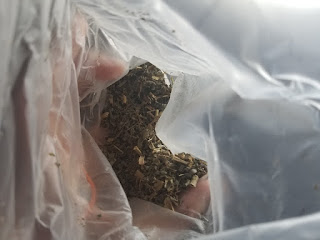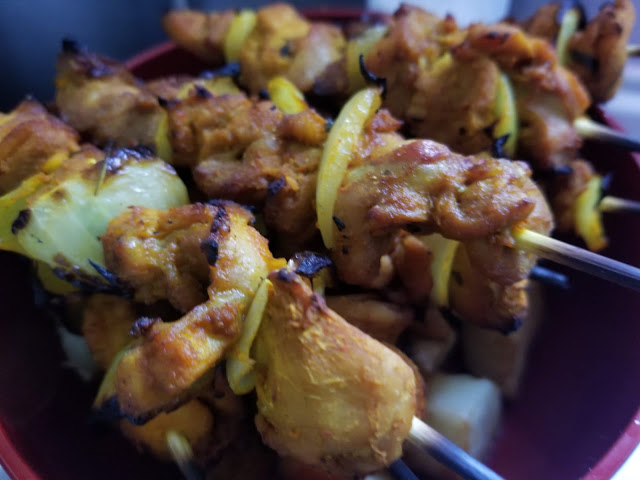 |
| [Picture Source: Researchgate.com] |
Studying the molecular structure is necessary to understand the basis of the biological activity of a natural compound (Barber & Stark, 2014). For example, a study was conducted to understand the molecular structure of Vav proteins which in the study, eight structural domains of Vav was used, and the result was indicating that several domains are having a role both in the activation and signaling steps of the Rac1 exchange factor while the others are having another specific biological effect (Zugaza et al., 2002). Hence, this study supported that different structure, different biological function, hence the molecular structures determine the biological activity.
Besides that, when we develop a drug from an artificial compound, studying the molecular structure is important since we have already known how biological activity is determined by the molecular structure, so the artificial compound should mimic the natural compound well. That’s why numerous studies were conducted to achieve the accurate configuration and conformation of an artificial compound to mimic the natural compound. For example, in studying the secondary structure of protein specifically in the foldamers chemistry field, several studies were reported. Gong et al., used hydrogen bonding to control the curvature in aryl amide, Aggarwal et al., employed the syn-pentane interaction to control the curvature in a simple hydrocarbon foldamers, William and Richard used long-range interaction between covalently connected helices to stabilize the secondary structure, and Thompson and Hamilton used dipole repulsion to stabilize extended foldamer (Burns et al., 2015; Cheng & DeGrado, 2002; German et al., 2015; Zhu et al., 2000). Further researches regarding this study are always developed until it can mimic the structure and give the biological activity accurately.
The same as the molecule structure, studying the virus structure is also important. Once we know the virus structure we may be easier to understand its biological activity, and even the prospective drugs to combat the virus. Drug discovery in virus disease is always challenging because the virus is easily mutated. Once it mutates, the drug may be meaningless, and a new drug will be required.
To get the structure, X-Ray Crystallography is needed. In this case, most crystallographic method depends on the use of symmetry and virus has the symmetry in its capsid so the structure of it can be elucidated using this method. There is 5 different elements of symmetry, (1) the pure rotation axis, (2) screw axis, (3) mirror plane, (4) glide plane, and (5) inversion axis. The n-fold rotation axis is the example of the pure rotation axis, this means that if an object has an n-fold rotation axis, then it will look the same if we rotate it 360/n degrees. Screw axes are the n-fold rotation axis combined with the translation produces n-fold screw axis. Mirror planes are mirroring the object in a plane. Glide axis combines mirroring with translation. Meanwhile, inversion axes are a rotation around an axis following by inversion through a point.
X-Ray Crystallography has been successfully studied a variety of larger and more complex spherical viruses over the last decades, then recently, cryo-EM technique has allowed visualizing the variety of spherical viruses at sub-nanometer to near the atomic resolution, yet some viruses are not suitable for high-resolution structural analysis by just a single technique of these, so to handle this, the combination of both techniques are used (Prasad & Schimd, 2012).
There are two types of symmetry of capsid organization in spherical viruses which are cubic symmetry and icosahedral. Studying the icosahedral virus is interesting since it is ubiquitous among spherical viruses, for example, poliovirus, rhinovirus, and adenovirus (Zandi et al., 2018). The icosahedron with 5-, 3-, and 2-fold rotational symmetry axes allows the placement of 60 identical units with equivalent contacts between each of them, hence the smallest icosahedral virus is composed of 60 subunits (Prasad & Schimd, 2012). If the subunits are more than 60 subunits, the geometric principles for quasi-equivalent assembly of them were developed by Caspar and Klug in 1962 (Johnson & Speir, 1997). In quasi-equivalence theory, subunits are determined by “T-number”, T (Triangulation number) is T=h2+hk+k2 (h, k, are 0 or positive integers). Rice dwarf virus (RDV) is the example of the icosahedral virus with the inner shell T=1 and outer shell T = 13 (Lu et al., 1998).
By studying the structure, we can understand the virus biological activity i.e. how the virus enters the host cell. For example, Hepatitis B Virus (HBV) infects the host cell by caveolin-1- or clathrin-mediated endocytosis depending on the cell line used (the study was performed in vitro), then DNA-containing capsid is released into the cytoplasm by the fusion of the viral envelope with endosomal membranes which the HVB capsid uses a unique mechanism to deliver its genome into the nucleus (Fay & Panté, 2015). When the fusion occurs, it involves the fusion protein. Viral fusion protein composed of different type of fusion peptides that make it different in the binding mechanism with the host cell receptors (White, Delos, Brecher, & Schornberg, 2008).
Besides understanding how the virus enters the host cell, by studying the structure also contributes to the vaccine development. A study was conducted to understand the vaccination effect through a subcutaneous immunization with the fusion protein DnaJ-∆A146Ply without additional adjuvants induces both humoral and cellular immunity against pneumococcal infection partially depending on TLR4 (Su et al., 2017). Therefore, studying the virus structure is necessary either to understand virus biological activity or the development of the vaccination.
Reference:
Barber, N. C., & Stark, L. A. (2014). Engaging with molecular form to understand function. CBE Life Sciences Education, 13(1), 21–24. https://doi.org/10.1187/cbe.13-12-0247
Burns, M., Essafi, S., Bame, J. R., Bull, S. P., Matthew, P., Balieu, S., … Aggarwal, V. K. (2015). Europe PMC Funders Group High Precision Assembly Line Synthesis for Molecules with Tailored Shapes, 513(7517), 183–188. https://doi.org/10.1038/nature13711.High
Cheng, R. P., & DeGrado, W. F. (2002). Long-range interactions stabilize the fold of a non-natural oligomer. Journal of the American Chemical Society, 124(39), 11564–11565. https://doi.org/10.1021/ja020728a
Fay, N., & Panté, N. (2015). Nuclear entry of DNA viruses. Frontiers in Microbiology, 6(MAY), 1–19. https://doi.org/10.3389/fmicb.2015.00467
German, E. A., Ross, J. E., Knipe, P. C., Don, M. F., Thompson, S., & Hamilton, A. D. (2015). Β-Strand Mimetic Foldamers Rigidified Through Dipolar Repulsion. Angewandte Chemie - International Edition, 54(9), 2649–2652. https://doi.org/10.1002/anie.201410290
Johnson, J. E., & Speir, J. A. (1997). Quasi-equivalent viruses: A paradigm for protein assemblies. Journal of Molecular Biology, 269(5), 665–675. https://doi.org/10.1006/jmbi.1997.1068
Lu, G., Zhou, Z. H., Baker, M. L., Jakana, J., Cai, D., Wei, X., … Chiu, W. (1998). Structure of double-shelled rice dwarf virus. Journal of Virology, 72(11), 8541–8549.
Prasad, B. V. V., & Schimd, M. F. (2012). Viral Molecular Machines. Adv Exp Med Biol, 726, 17–47. https://doi.org/10.1007/978-1-4614-0980-9
Su, Y., Li, D., Xing, Y., Wang, H., Wang, J., Yuan, J., … Zhang, X. (2017). Subcutaneous immunization with fusion protein DnaJ-ΔA146Ply without additional adjuvants induces both humoral and cellular immunity against pneumococcal infection partially depending on TLR4. Frontiers in Immunology, 8(JUN). https://doi.org/10.3389/fimmu.2017.00686
White, J. M., Delos, S. E., Brecher, M., & Schornberg, K. (2008). Structures and Mechanisms of Viral Membrane Fusion Proteins. Critical Reviews in Biochemistry and Molecular Biology, 43(3), 189–219. https://doi.org/10.1080/10409230802058320.Structures
Zandi, R., Reguera, D., Bruinsma, R. F., Gelbart, W. M., Reiss, H., Zanditt, R., … Rudnick, J. (2018). Origin of Icosahedral Symmetry in Viruses Linked references are available on JSTOR for this article : Origin of icosahedral symmetry in viruses, 101(44), 15556–15560.
Zhu, J., Parra, R. D., Zeng, H., Skrzypczak-Jankun, E., Zeng, X. C., & Gong, B. (2000). A new class of folding oligomers: Crescent oligoamides [4]. Journal of the American Chemical Society, 122(17), 4219–4220. https://doi.org/10.1021/ja994433h
Zugaza, J. L., López-Lago, M. A., Caloca, M. J., Dosil, M., Movilla, N., & Bustelo, X. R. (2002). Structural determinants for the biological activity of Vav proteins. Journal of Biological Chemistry, 277(47), 45377–45392. https://doi.org/10.1074/jbc.M208039200



























































